Watch VIDEO
This How to is based on Windows 10×64 Pro image installation. The other windows versions are supported
For this you will need an actual Windows installation ISO.
We are using: Windows-10×64-Pro.iso. Be sure that distro name does not have spaces in the filename!
The procedure is the same for any other Windows version 7, 8.1, 10, 11 hosts.
1. Create a new directory for this image according to the naming convention:
root@eve:~# mkdir /opt/unetlab/addons/qemu/win-10x64-PRO/
2. Use WinSCP or FileZilla SFTP or SCP (port 22) to copy distro ISO image into the newly created directory path: /opt/unetlab/addons/qemu/win-10×64-PRO/
3. Go to that directory via CLI
root@eve:~# cd /opt/unetlab/addons/qemu/win-10x64-PRO/
4. Rename this ISO file to cdrom.iso
root@eve:~#/opt/unetlab/addons/qemu/win-10x64-PRO# mv Windows-10x64-Pro.iso cdrom.iso
5. Create a new virtual HDD named virtioa.qcow2 inside of your new image folder. Size you can choose per your needs. This example is used 60Gb HDD.
root@eve:~# cd /opt/unetlab/addons/qemu/win-10x64-PRO/
root@eve:~#/opt/unetlab/addons/qemu/win-10x64-PRO# /opt/qemu/bin/qemu-img create -f qcow2 virtioa.qcow2 60G
6. Create a new lab and add the newly created win-10×64-PRO node
7. Connect the node to your home LAN cloud/internet in order for it to be able to get updates from the internet
8. Start the node inside the lab and customize the installation of your Windows as you like, as you have connected it to your home LAN and internet this installation will be like any normal Windows installation
9. IMPORTANT: When windows installation asks you to choose an HDD where Windows will be installed, choose Load driver, Browse, choose FDD B/storage/2003R2/AMD64 or x86, (AMD or x86 depends which version of windows you are installing 64 or 32 bit), click next and you will see HDD RedHat VIRTIO SCSI HDD now.
10. Select this HDD and continue to install Windows as usual.
11. Optional: if you would like to use this image with the EVE RDP console, then you have to allow RDP on this Windows machine and create a user and password. In this example, we use user/Test123. Be sure that in the Windows Firewall the Remote Access inbound rules are permitted for Public access.
12. Finish installation and shutdown properly the VM from inside VM OS. Start/shutdown
IMPORTANT: Commit the installation to set it as the default image for further use in EVE-NG:
13. On the left side-bar within the lab in the EVE Web-UI choose “Lab Details” to get your lab’s UUID details: In this example: UUID: 3491e0a7-25f8-46e1-b697-ccb4fc4088a2
14. Find out the POD ID of your used and the Node ID of your newly installed node.
The POD number is assigned to your username, and can be found in the EVE GUI, Management/User Management. The Admin user uses POD number 0 by default.
The Node ID can be obtained by right clicking the node on the topology. In this Example it is 8
15. From the EVE CLI, locate the installed image and commit your changes to be used as default for further use in EVE-NG:
root@eve:~# cd /opt/unetlab/tmp/0/3491e0a7-25f8-46e1-b697-ccb4fc4088a2/8/
root@eve:~#/opt/unetlab/tmp/0/3491e0a7-25f8-46e1-b697-ccb4fc4088a2/8/ /opt/qemu/bin/qemu-img commit virtioa.qcow2
16. Remove cdrom.iso from /opt/unetlab/addons/qemu/win-10×64-PRO/
root@eve:~# cd /opt/unetlab/addons/qemu/win-10x64-PRO/
root@eve:~#/opt/unetlab/addons/qemu/win-10x64-PRO/ rm -f cdrom.iso
DONE
Advanced instructions on how to make your image smaller in size (sparsify&compress).
- After you have done all the steps above and your default image is created, you can compress its HDD and make it smaller.
IMPORTANT: for compressing an image you must have sufficient free space on your EVE host, the free space must exceed the total space (60GByte in this example) of the HDD you plan to shrink. The space needed can vary but will be the total space of the disk to be shrunk plus the size of the final sparsified and compressed image. To be safe you should have double the size of the HDD you want to shrink as free space on your EVE host. In our example we needed 65Gb of free HDD space. Once this process is done, the temporary file(s) will be deleted and free space reclaimed.
- From the CLI: go to your windows image directory:
root@eve:~# cd /opt/unetlab/addons/qemu/win-10x64-PRO
and perform the sparsify command:
root@eve:~#/opt/unetlab/addons/qemu/win-10x64-PRO/ virt-sparsify --compress virtioa.qcow2 compressedvirtioa.qcow2
- This will take some time and another compressed image will be created in the same image directory (win-10×64-PRO)
- now you can rename your original virtioa.qcow2 file to orig.qcow2
root@eve:~#/opt/unetlab/addons/qemu/win-10x64-PRO/ mv virtioa.qcow2 orig.qcow2
- Rename the compressed image name to virtioa.qcow2:
root@eve:~#/opt/unetlab/addons/qemu/win-10x64-PRO/ mv compressedvirtioa.qcow2 virtioa.qcow2
- now you can test your new compressed image on a lab, just wipe the node and start it.
- If the compressed node works fine, you can delete your original source image orig.qcow2:
Pro
Community
Integration packs
Windows
Linux
MacOS
Сайт летает на VPS от Inferno Solutions
Go to Top
Сегодня мы с вами поговорим о том, как добавляются образы устройств в эмулятор Eve-NG, рассмотрим это на примере Cisco L2, L3 и mikrotik. Напомню, что в предыдущей статья я рассказывал, как установить эмулятор eve.
Содержание
- Добавление образов Cisco
- Добавление CHR MikroTik
- Ну и на вкусное, windows в eve-ng
Первым делом подключаемся через WinSCP к нашей VM c eve, вводим ip логин и пароль. Далее переходим в каталог /opt/unetlab/addons/qemu/.
В нем создаем две папки с названием:
- viosl2-15 – это для L2 образа 15 версии;
- vios-15 – это для L3 образа 15 версии.

Сами образы внутри папок нужно назвать virtioa.qcow2 – как на рисунке ниже.

Далее для удобной работы можно также скачать и установить утилиты (если они еще у вас не стоят) которые предлагают разработчики там, putty, vnc, wireshark и тд.

После заходим по ssh на нашу виртуальную машину и вводим команду «/opt/unetlab/wrappers/unl_wrapper -a fixpermissions» для того чтобы система увидела наши добавленные образа.

Теперь можно идти в web-интерфейс EVE-NG и в нодах выбирать cisco роутер и свитч.

Соединять между собой устройства можно только выключенными, при наведении появляется маленькая вилочка, которую нужно дотянуть до другого устройства, выбрать порт которому будет подсоединено.


Зайти на устройство можно кликнув на него мышкой. Проверим командой «show cdp neighbor» видят ли устройства друг друга.

Как видим все отлично работает, образ cisco успешно добавлены в эмулятор eve.
Добавление CHR MikroTik
Добавления микротика происходит почти аналогичным образом. Заходим также на виртуалку через winscp, переходим в каталог /opt/unetlab/addons/qemu/ и создаем там папку с именем mikrotik-X где X можно писать что угодно, главное, чтобы все что до него было так.

Далее идем на mikrotik.com/download и качаем образ mikrotik CHR (Cloud Hosted Router). Скаченный файл переименовываем в «hda.qcow2» и закидываем в созданную папку.

Не забываем в консоли выполнить команду «/opt/unetlab/wrappers/unl_wrapper -a fixpermissions». Добавляем нашу виртуальную os микротика в эмулятор соединяем с реальной сетью (перед этим назначив ip интерфейсу CHR). Теперь можем зайти на него через winbox и проверить.

Ну и на вкусное, windows в eve-ng
Также в eve-ng можно добавить ос windows для этого нужно провести несколько манипуляций таких как установка, конвертация виртуалки и тд. Я это уже все сделал и предоставлю вам готовый образ windows 7×32 который нужно:
- Скачать здесь (ссылка удалена по авторским правам) и переименовать в hda.qcow2
- Создать и скопировать в папку /opt/unetlab/addons/qemu/win-7
- В терминале выполнить команду «/opt/unetlab/wrappers/unl_wrapper -a fixpermissions».
Все, спокойно добавляйте win7 как обычную ноду и стройте топологии.

Всем спасибо за внимание! Если есть вопросы пишите в комментариях.
Вы хорошо разбираетесь в Микротиках? Или впервые недавно столкнулись с этим оборудованием и не знаете, с какой стороны к нему подступиться? В обоих случаях вы найдете для себя полезную информацию в углубленном курсе «Администрирование сетевых устройств MikroTik». В курсе много практических лабораторных работ по результату выполнения которых вы получите обратную связь. После окончания обучения вы получите диплом гос. образца РФ. Подробности и доступ к началу курса бесплатно тут.
- Prepare the Windows ISO: Obtain a Windows installation ISO file. You can download these from the Microsoft website or use an existing ISO file you have.
- Upload the ISO to EVE-NG: Log in to the EVE-NG web interface. In the top menu, go to “Images” and then click on “Browse” to select the Windows ISO file from your local machine. Click on “Upload” to upload the ISO file to EVE-NG.
- Create a QEMU VM: In the EVE-NG web interface, go to the “Node” section and click on “Add Node.” Select the type as “QEMU” and configure the settings for the VM. You can specify the number of CPUs, amount of RAM, and the size of the hard disk.
- Map the Windows ISO: In the QEMU VM settings, go to the “Console” tab. Under the “CD/DVD” section, select the Windows ISO file you uploaded earlier as the CD/DVD image.
- Start the VM: After configuring the VM settings, click on “Add Node” to create the QEMU VM. Start the VM by clicking on the play button in the EVE-NG interface.
- Install Windows: Access the VM console by right-clicking on the VM in the EVE-NG interface and selecting “Console.” The VM will boot from the Windows ISO. Follow the on-screen instructions to install Windows. You may need to format the virtual hard disk and select the installation partition during the process.
- Complete the Installation: After Windows is installed, the VM will restart. You can then log in to Windows and configure it as needed.
- Optional: Install VirtIO Drivers: For better performance, you can install VirtIO drivers in Windows. These drivers are included in the EVE-NG installation and can be found in the
/opt/unetlab/addons/qemu/virtio-windirectory. To install the drivers, mount the VirtIO ISO in Windows and run the installer. - Access Windows from EVE-NG: Once Windows is installed and running, you can access it from EVE-NG by right-clicking on the VM in the EVE-NG interface and selecting “Console.”
- Activate Windows: After installation, you’ll need to activate Windows using a valid product key. You can do this by going to “Settings” > “Update & Security” > “Activation” in Windows.
Remember to comply with Microsoft’s licensing terms and ensure that you have a valid license for Windows when using it on EVE-NG or any other virtualization platform.
It’s a mistake if your EVE-NG doesn’t have a Windows virtual machine. In this article, I will show you how to install Windows 10 in an EVE virtual environment.
Windows 10 iso file
First you need to prepare a Windows 10 iso file.
Next you copy and paste the iso file into eve using WinSCP.
File directory: opt/unetlab/addons/qemu
You create a new folder according to eve’s naming convention, here I name it «win-10«. Note that you must not name the wrong convention. Next, drag and drop the iso file into the newly created folder. You rename the iso file to «cdrom.iso«.
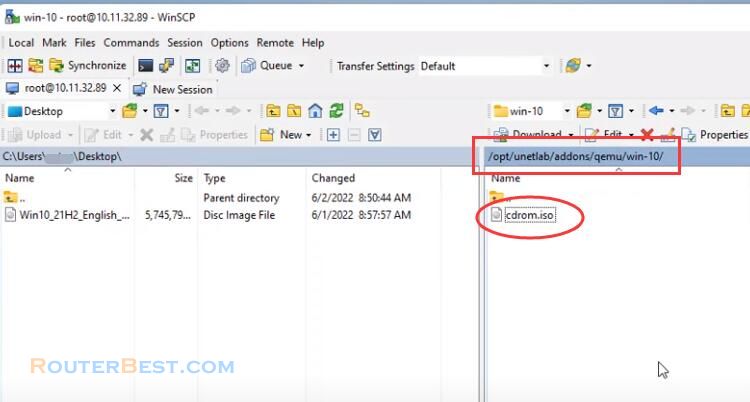
Next you open a command window access EVE with SSH.
cd /opt/unetlab/addons/qemu/win-10/ /opt/unetlab/addons/qemu/win-10# ls
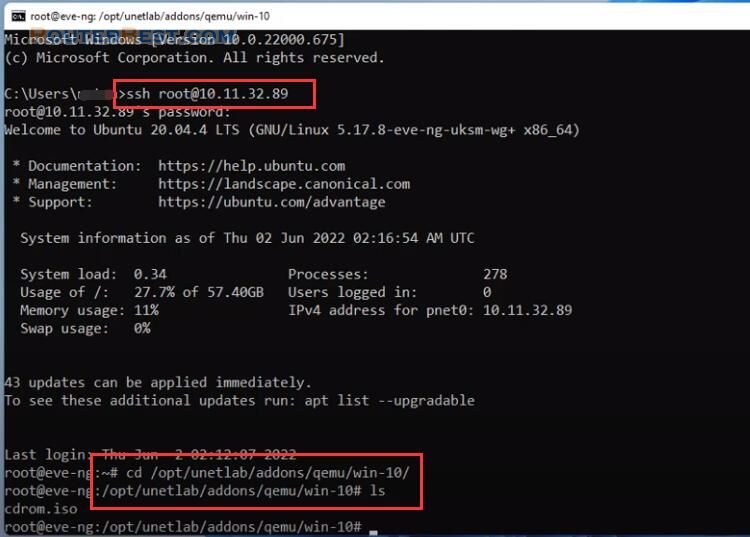
You create a new hard drive for the Windows 10 virtual machine.
You can completely perform the previous steps using the command line according to the instructions.
Here you are instructed to create a hard drive of size 30G, because I installed Windows 10 so I increased the size to 40G.
/opt/unetlab/addons/qemu/win-10# qemu-img create -f qcow2 virtioa.qcow2 40G
Next, you create a new lab and name it as you like. I created a new lab named «win10». In the device list, I go to the Windows category and add a new computer.
Next, you connect the virtual computer to the internet to update, install software or check the network connection.
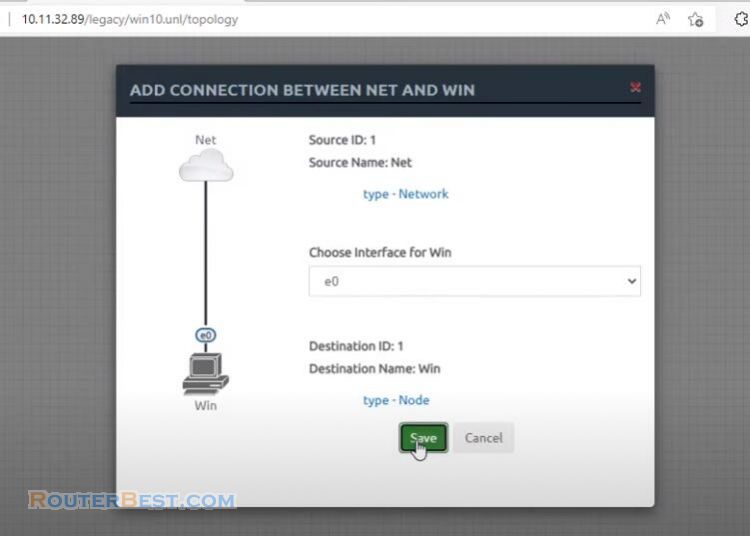
Installing the Windows 10 operating system
You start the computer and start installing the Windows 10 operating system. You won’t find the hard drive like when you install Windows 10 on a real machine.
To find the hard drive, click «Load Driver» > «Browse» > «Floppy disk drive» > «storage» > «2003R2» > «AMD64».
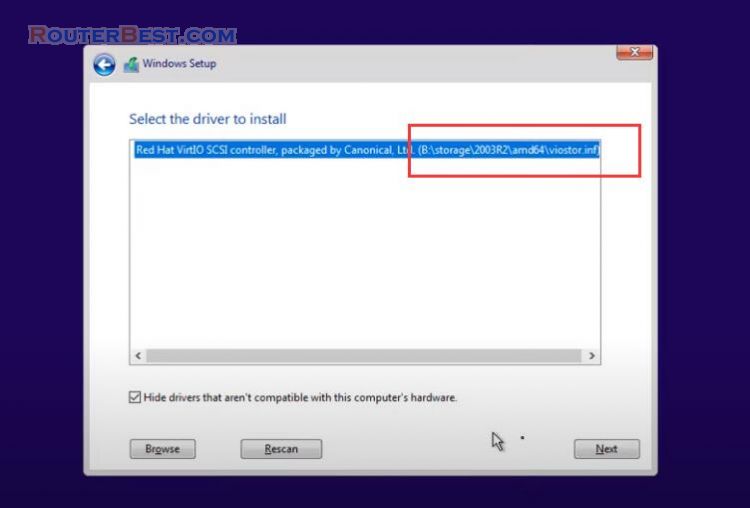
Wait a while you will see the hard drive appear and you install Windows 10 on it. The next installation steps will be the same as on a physical computer so I will fast forward the steps so you don’t have to wait too long.
At this point, you have installed Windows 10 for the virtual machine, but you still have an important step to take.
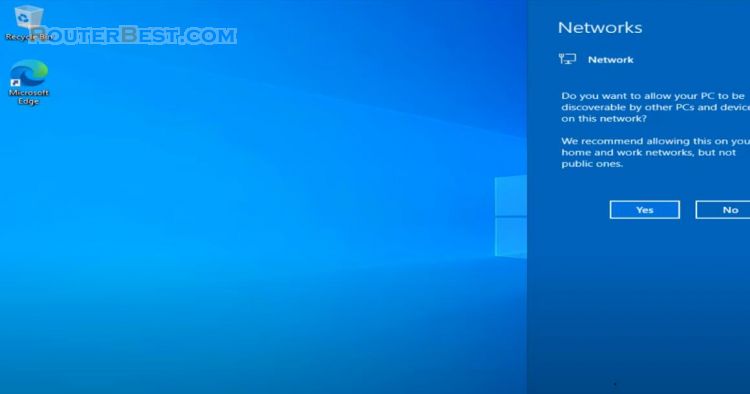
Please follow the next steps.
So the virtual machine works fine, has an internet connection, next you turn off the virtual machine and move on to the next step.
You go to Lab details and write down the UUID information.

Next, Find out the POD ID of your used and the Node ID of your newly installed node.
As in this article, POD ID is 0.

Here is a sample command with the information you need to find.
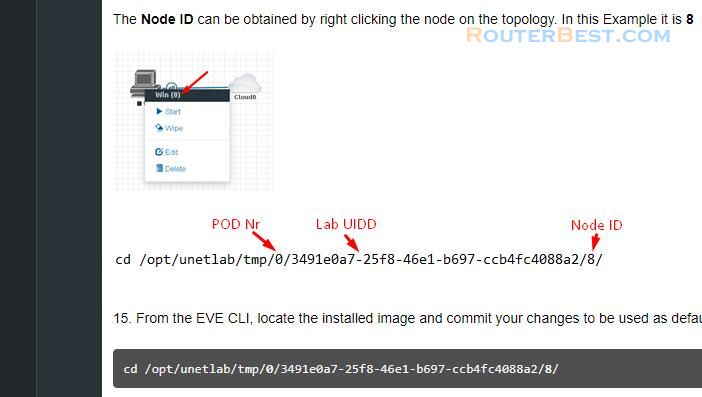
You right click on the newly created virtual machine to find the node id, and as you can see the node id is 1.
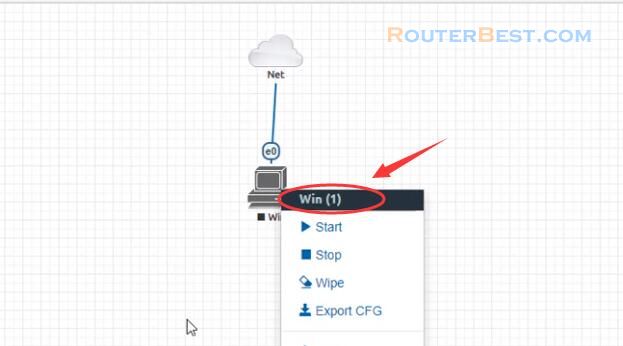
Next you create the image from the Windows virtual machine created in the previous step.
You notice the change in the size of the file virtioa.qcow2, which will increase in size after completion.
And here is the image file you obtained.
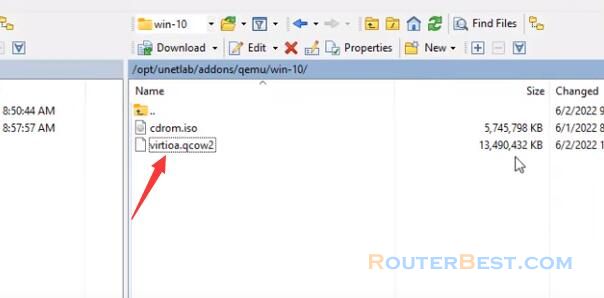
It will take you about 5 minutes to complete this step, so please wait patiently.
Now you can remove Windows 10 ISO file from Eve.
Facebook: https://www.facebook.com/routerbest
Twitter: https://twitter.com/routerbestcom
Tags: EVE-NG Windows 10
